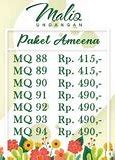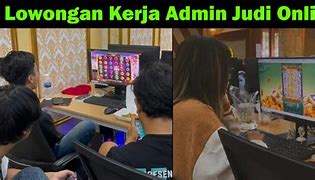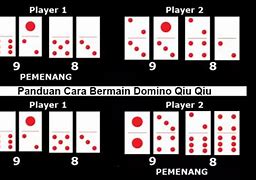
Adaptations and spinoffs
Geng: The Adventure Begins, an accompanying film to the Upin & Ipin series, was released on 12 February 2009 to popular success.[8] Following the release of Geng, Les' Copaque announced the subsequent Upin & Ipin films, named Upin & Ipin: Angkasa in mid-2009. But, the film was cancelled and replaced with Laksamana Upin & Ipin,[9] which later abandoned due to unexpected financial and schedule situation which occurred in 2011.
The second Upin & Ipin film, titled Upin & Ipin: Jeng Jeng Jeng! was released on 24 November 2016 and co-produced by Les' Copaque Production and KRU Studios.[10][11] This was then followed by the third film, Upin & Ipin: The Lone Gibbon Kris, released on 21 March 2019.[12][13]
A spinoff series, Upin & Ipin Iqra'[c] centered on reciting al-Quran. In the series, Upin and Ipin with their friends learning Quran with their religious teacher, Ustaz Sheikh Abdulkarim Omar al-Makki. It premiered on Astro Ceria in Malaysia and MNCTV in Indonesia starting 4 January 2019.
Another spinoff series, Upin & Ipin: The Helping Heroes, began premiered on Les' Copaque YouTube channel on 22 May 2020.[14][15] The series also premiered on Netflix starting 10 November 2023.[16]
Since its debut in 2007, Upin & Ipin has wielded its influence in countries of the Malay archipelago,[17] notably in Malaysia and Indonesia which share linguistic and cultural similarities.[18] Its first season landed its first award, for Best Animation in KLIFF 2007.[19]
In December 2010, the Upin & Ipin franchise had garnered income about RM12 million in 2009 and 2010, mostly the sales of Upin & Ipin series to the international broadcasters.[20][21]
Facebook announced in Memology study results that the Upin & Ipin page was the most popular fictional character page on Facebook worldwide throughout 2011.[22][23] In 2012, Upin & Ipin was the most searched keyword by Malaysian Google users in the TV Show category according to Google Zeitgeist.[24] As of 2013, Upin & Ipin's official Facebook page has reached 7 million fans.
In 2013, Upin & Ipin is appointed as the UNICEF Malaysia's National Ambassadors.[25][26][27]
The Ultra Series crossover special was received positively on it airing in 2014. As a response, the crossover character in the special, Ultraman Ribut (ウルトラマンリブット, Urutoraman Ributto) was officially recognized as a canon character by Tsuburaya Productions,[28] later making its live-action debut in the web series Ultra Galaxy Fight in 2019.
In India it started to air in Hindi on Hungama in May 2018.
Upin & Ipin has received consistently high viewership on TV9 in Malaysia, becoming the most watched children's program across all channels on broadcast television in 2007 and 2008.[29]
While season two was on air on Ramadan 2008, it was reportedly watched by 1.5 million viewers on TV9,[30] making it the second most-watched animated series on all of Malaysian television, right behind Doraemon (1.6 mil), yet ahead of SpongeBob SquarePants (800,000).[31] The popularity of Upin & Ipin could have attributed to the commercial success of Malaysia's first CGI-animated feature film, Geng: The Adventure Begins (2009), which featured the twin characters Upin and Ipin, propelling it into the RM 6.31 million mark throughout its seven-week run in Malaysian cinemas as one of the highest-grossing Malay-language films in history.[31]
As the third season reaches its conclusion in late 2009, TV9 reports that Upin & Ipin was viewed by 1.6 million, making it the second most-viewed programme on the channel, just behind the free TV premiere of Geng which was watched by 2.45 million (scoring TVR 12.8).[32]
Physical Appearance[]
Opah's face is shaped like a pentagon, with a mole on her left cheek. She always wore a light blue dress with blue flowers, brown batik sarong, and a blue head coverings. In the election, she was fond of wearing all green.
Opah is a senior citizen gentle wind if compared to her granddaughter Ros, particularly when treating delinquency Upin and Ipin, so that she allegedly spoils the twin brothers. She is rich in worldly and religious knowledge. Although she is old, but she remained strong body and mind. Her age may be overshadowed by the memory of Japan's life in "We Are 1 Malaysia" episode.
Harianjogja.com, JOGJA—Sejumlah mahasiswa dan dosen dari Prodi Animasi Fakultas Seni Media Rekam, ISI Jogja menciptakan kartun berbahasa Jawa berseri bertajuk Sibaja. Kartun ini menjadi salahs atu alternatif penanaman budi pekerti Jawa karena di dalamnya berisi tentang unggah ungguh dan komunikasi antara orang tua dan anak.
Kartun ini disosialisasikan di hadapan Dinas Pendidikan kabupaten dan kota di DIY melalui diskusi bertajuk Kolaborasi Produk Serial Animasi Budi Pekerti Jawa di Hotel Artotel Jogja, Selasa (6/12/2022). Selain dosen, pembuatan kartun ini melibatkan mahasiswa serta sejumlah guru yang menguasai Bahasa Jawa.
BACA JUGA : Balai Bahasa Siapkan Film Animasi untuk Sosialisasi
“Upin Ipin saja bisa mengkampanyekan Bahasa Malaysia bahkan dikenal di Indonesia, mengapa kita tidak lakukan di sini, yang di Jawa ini perlu mengangkat itu [bahasa Jawa] juga,” Ketua Tim Produksi Serial Animasi Sibaja ISI Jogja Kathryn Widhiyanti di sela-sela kegiatan tersebut.
Dosen Animasi ISI Jogja ini menjelaskan awal mula membuat ide kartun Sibaja itu dimulai dari keresahan ketika melihat sebagian besar anak-anak terutama di perkotaan yang lebih suka menggunakan bahasa Indonesia dan tidak lagi mengenal bahasa Jawa. Selain itu di dalam kurikulum saat ini tidak ada mata pelajaran budi pekerti, padahal Bahasa Jawa mengandung banyak ajaran budi pekerti. Di sisi lain, era saat ini anak maupun usia remaja banyak yang tidak memahami unggah ungguh Jawa.
“Jadi ini memang berawal dari keresahan kami, harapannya kartun Sibaja ini dapat berkontribusi membentuk karakter budi pekerti anak,” katanya.
Dalam animasi tersebut ia memasukkan karakter budaya dan wisata budaya yang ada di DIY. Selain itu memasukkan unsur kebiasaan aktivitas harian anak-anak sehingga dapat diterima lebih mudah di kalangan anak. Kemudian memberikan adegan kartun yang menunjukkan adat Jawa, seperti cara berkomunikasi antara anak dengan orang yang lebih tua, di mana ada istilah unggah-ungguh yang harus dijunjung tinggi.
“Kami memasukkan hal lucu yang ringan untuk bisa dipahami anak, tidak hanya Sibaja dengan teman-temannya tetapi juga Sibaja bersama orangtua, saudara jadi pemahaman struktur atau tingkatan Bahasa Jawa atau unggah-ungguh juga ditampikan,” ucapnya.
BACA JUGA : PENDIDIKAN ANAK : Belajar Animasi Bersama Kreator
Ada lima karakter utama anak pada kartun ini terdiri atas Sibaja, Kirana, Kelik, Melodi dan Siwage serta tokoh tambahan seperti orangtua maupun bibi dan paman. Adapun animasi Sibaja ini setiap episode berdurasi sekitar enam menit terdiri dua bagian yaitu animasi dan edukasi. Sehingga kartun ini tidak hanya menyajikan film secara penuh, namun ada cerita dan edukasi.
“Edukasinya juga menggunakan kawruh Basa Jawa seperti nama-nama bunga, bagian pohon kadang anak tidak tahu bahwa tinggi itu basa Jawanya dhuwur,” ujarnya.
Cek Berita dan Artikel yang lain di Google News
Eduardo TADDEO #eduardotaddeo #rap #faccaocentral #noticias #ultimasnoticias More
O homem achou um carrapato na mulher. #movie #film #cenasdefilme #ftv #KwaiFilmes More
Bách khoa toàn thư mở Wikipedia
Upin & Ipin (còn được gọi là: Upin & Ipin dan Kawan-Kawan) là series hoạt hình dài tập của hãng sản xuất Les' Copaque Production, được sản xuất từ năm 2007. Bộ phim miêu tả cuộc sống và cuộc phiêu lưu của hai người anh em song sinh Upin và Ipin trong một làng của người Malaysia.
Ban đầu thì bộ phim là dự án phụ của bộ phim hoạt hình Geng: The Adventure Begins. Upin & Ipin đã được giới thiệu trên TV9 vào ngày 13 tháng 9 năm 2007 như một chương trình đặc biệt nhân ngày lễ Ramadan / Eid-ul-fitr, kéo dài sáu tập, để dạy cho trẻ em ý nghĩa của tháng đạo Hồi. Tính đến năm 2022, bộ phim đã lên đến mùa thứ 16, bao gồm một mùa đặc biệt khác của Ramadan năm 2008 và từ năm thứ ba trở đi, tựa đề bộ phim là Upin & Ipin and Friends (rút gọn là Upin & Ipin). Loạt phim được chiếu qua Disney Channel Asia, tập trung nhiều hơn vào việc nói về cuộc sống của Upin và Ipin với bạn bè của họ trong những ngày bình thường. Hiện tại, phim đang sản xuất tới mùa thứ 16.
Upin và Ipin là cặp song sinh 5 tuổi người Mã Lai cùng với chị gái Ros và bà Uda (tên thường gọi là Opah) trong ngôi làng Kampung Durian Runtuh (làng Chặt Sầu Riêng). Do chiến tranh, bố mẹ của họ đột ngột qua đời từ sớm (cha của Upin, Ipin và Ros là sĩ quan quân đội Malaysia). Upin và Ipin học tại Tadika Mesra (trường mầm non), nơi họ cùng với một nhóm bạn học, bao gồm cả Mei Mei, Jarjit Singh, Ehsan, Fizi (anh họ của Ehsan), Mail và Ijat. Người dạy học cho các bạn là cô Jasmin (nay là cô Melati).
Trưởng làng Kampung Durian Runtuh là Isnin bin Khamis, được biết đến nhiều hơn là ông Tok Dalang Ranggi, nhà vô địch Wayang Kulit. Ông Tok Dalang giữ một cây chôm chôm, một vườn sầu riêng cho các mục đích khác nhau, và một con gà trống tên là "Rembo". Trong số đó, các cư dân khác của ngôi làng là Muthu, chủ quán đồ ăn duy nhất của ngôi làng, sống với con trai Rajoo và con bò Sapy; Salleh (Sally), một người chuyển giới sở hữu một thư viện di động và một chiếc xe hơi; bác Ah Tong, một ông trung niên người Trung Quốc làm nghề thu nhặt ve chai. Một nhân vật mới sau đó đã được thêm vào trong series là một cô bé Indonesia tên là Susanti đã chuyển đến sống cùng gia đình mình.
[1][liên kết hỏng] Kênh Official Upin & Ipin trên YouTube
Popularity in Indonesia
Indonesia has been the most obvious export market for Upin & Ipin. In 2009, MNCTV which airs the series in the country reported a TVR of 10.5.[33] Upin & Ipin has also been praised by the Indonesian press; for instance, Fadil Abidin for Analisa who remarked on the vastness of moral content and Islamic values, such as respect for those of different ethnic or religious backgrounds, in a communal setting consisting not only of Malays, Chinese and Indian Malaysians, but also Indonesians.[34]
In March 2010, as the Balinese Hindu community prepare for Nyepi, images of ogoh-ogoh (demonic effigies used for the famed ngrupuk ritual on the eve of Nyepi) which largely resemble Upin & Ipin were exposed on Indonesian media. The effigy reportedly cost 4 million rupiah.[35]
TRIBUNJATIM.COM - Apakah Tribunners pernah menemukan istilah gaul 'opet' saat berselancar di media sosial?
Opet kerap ditemukan di media sosial. Biasanya, istilah ini nongol di konten atau cuitan bersifat celaan.
Lantas, apa arti kata opet?
Kendati penggunaannya cenderung negatif, istilah gaul ini berasal dari kartun Upin Ipin, loh.
Daripada bingung, yuk simak arti kata opet di bawah ini!
Baca juga: VIRAL TERPOPULER: Penyanyi Bikin Konten Joget di Tanah Suci - Mahasiswa Ejek UMM Dipanggil Rektor
Informasi seputar berita menarik lainnya di Google News TribunJatim.com
Opet merupakan nama fiktif untuk karakter kera dalam kartun Upin Ipin.
Namun dalam bahasa gaul, opet ternyata digunakan untuk menyindir orang-orang yang bertingkah laku aneh serta menyimpang dari nilai-nilai sosial.
Istilah gaul ini banyak digunakan sebagai konten video di TikTok, seperti contoh unggahan akun berikut.
Berdasarkan contoh tersebut, opet merupakan kata ganti untuk sebutan seseorang yang memiliki tingkah laku, sikap atau hal tidak menyenangkan.
Sebab, orang-orang cenderung mengasosiasikan individu yang memiliki sikap buruk dan tidak menyenangkan dengan nama-nama hewan.
Baca juga: Arti Kata Botuna, Panggilan Sosok Desta yang Kerap Bikin Natasha Rizky Cemburu? Trending di Twitter
Selain diartikan sebagai hewan (kera), opet juga memiliki makna lain.
Berdasarkan penelusuran Tribunsumsel dari laman Kaskus dan media sosial lainnya, Opet merupakan kosa kata kasar dalam bahasa Hokkien.
Opet dalam bahasa orang-orang Hokkien atau Tionghoa keturunan yang tinggal di Kota Medan Provinsi Sumatera Utara, memiliki arti bagian sensitif di bagian bawah wanita.
Istilah ini dipergunakan orang-orang keturunan Tionghoa yang menggunakan bahasa Hokkien di daerah Kota Medan.
Dengan begitu, opet merupakan istilah yang memiliki konotasi negatif, baik sebagai nama hewan baik sebagai bagian sensitif wanita.
Jadi jangan sampai tidak tahu dengan arti kata opet dalam bahasa gaul.
Itulah penjelasan mengenai arti kata opet dalam bahasa gaul, dan contoh penggunaannya.
Selain 'opet', beberapa bahasa gaul ini juga viral di TikTok, berikut rangkumannya:
Baca juga: Arti Kata Yandex, Mesin Pencari Saingan Google yang Populer di Media Sosial, Bisa Temukan Hasil Aneh
Sasimo merupakan singkatan dari istilah Sana Sini Mao alias murahan.
Bahasa gaul sasimo juga kreap ditulis dengan kode 5451m0.
Istilah ditujukan kepada orang yang mau berhubungan dengan siapa saja tanpa melihat apapun alasannya.
Kalau diajak jalan mau-mau aja tanpa memilih orang.
Baca juga: Arti Kata Tch, STW, ACDC, hingga BM, Kumpulan Bahasa Gaul yang Belakangan Viral di TikTok
Dalam hubungan sasimo adalah menyebut atau menyindir orang yang mau saja berhubungan dengan siapapun, walaupun sudah memiliki pasangan.
Dari penjelasan bisa disimpulkan orang yang sasimo adalah murahan.
Sana sini mau atau bisa disebut orang murahan adalah seseorang yang memiliki tingkah laku menyimpang, dia mau berhubungan dengan siapa saja baik itu untuk cowok maupun cewek.
Arti Kata Fujo atau Fujoshi
Istilah fujo cukup ramai dipakai di media sosial.
Namun sayangnya masih banyak yang belum paham apa itu fujo atau fujo artinya dalam bahasa gaul.
Jika anda satu di antaranya yang pernah menemukan kata fujo di sosmed, namun tak tahu apa itu fujo dalam bahasa gaul, simak penjelasannya disini.
Dalam artikel ini, Tribunpekanbaru.com akan membahas apa itu fujo dalam bahasa gaul .
Semoga dengan penjelasan ini, anda paham dan tidak bertanya lagi apa itu fujo dalam bahasa gaul .
Sebelum penjelasan apa itu fujo dalam bahasa gaul, perlu diketahui bahwa fujo adalah bahasa jepang Fujoshi (ふじょ).
Secara kata, apa arti fujoshi yaitu tukang sihir wanita, perempuan, kaum hawa, bantuan, sokongan.
Jika diterjemahkan ke dalam bahasa Indonesia, apa arti fujoshi atau fujo adalah wanita busuk.
Dalam makna lain, apa arti fujoshi adalah wanita basi yang tidak bisa menikah lagi.
Sedangkan apa itu fujo dalam bahasa gaul maksudnya adalah orang-orang penggemar Yaoi atau Shonen AI, yaitu mereka yang menyukai sesama jenis.
Yaitu wanita yang menyukai manga atau anime yang mengambarkan hubungan sejenis, namun identik dengan lesbian.
Baca juga: Memahami Arti Kata She Is A 10 But yang Viral di TikTok, Sekadar Lelucon untuk Mengisi Waktu Luang
Baca juga: Arti Kata Clingy, Istilah Gaul Viral di Medsos, Kerap Muncul dalam Hubungan Asmara, Bisa Jadi Toxic
Untuk pria, istilah yang dipakai adalah Fudanshi.
Sama seperti Fujoshi, Fudanshi memiliki makna pria busuk, yang konteknya penyuka sesama jenis.
Biasanya Fudanshi identik dengan konten manga atau anime homoseksual.
Dalam karya-karya anime dan manga, terdapat banyak sekalia komik yang berkisah dengan hubungan sejenis ini.
Biasanya komik itu ditandai dengan logo ++
Dan pastinya, komik ini dikhususkan bagi orang dewasa.
Nah, sekarang kamu paham kan dengan arti Fujo dan arti Fudan.
Artikel ini telah tayang di Tribuntrends.com
Berita Seleb dan arti kata lainnya
Malaysian animated series
Current logo, used since 2018.
Upin & Ipin (Jawi: اوڤين دان ايڤين) is a Malaysian animated television series created by Burhanuddin Md Radzi and his wife, Ainon Ariff and is produced by Les' Copaque Production, based in Shah Alam, Selangor. The series made its premiere on TV9 for 11 seasons and on Astro Ceria, Astro Prima and TV2 from season 12 onwards. It also made its premiere in Indonesia on MNCTV (formerly TPI) from 2007 to 2023. From September 2024 this animation on Indonesian airing moved now on Trans TV until present and also available for online streaming on both Disney+ and Netflix.
The series follows Upin and Ipin, five-year-old twin brothers who are characterised by their abundance of energy, imagination and curiosity about the world. Both twins, who lost their parents while they are still a baby, live with their older sister, Ros and grandmother, whom they call Opah, at the fictional Kampung Durian Runtuh. Overarching themes include the focus on family, growing up, and Malaysian culture.
Originally a side project for the blockbuster animated film Geng: The Adventure Begins, Upin & Ipin was introduced on TV9 on 14 September 2007 as a six episode Ramadan and Eid-ul-Fitr special, to teach children the significance of the Islamic holy month of Ramadan and Shawwal. A second season, also centered on Ramadan, aired in 2008. As of 2024, Upin & Ipin is the longest-running Malaysian animated series, currently in its 17th year of production, and is currently in its 18th season.
Upin & Ipin has received consistently high viewership in Malaysia on both broadcast television and video-on-demand services. It has influenced the development of merchandise, film adaptations and a stage show featuring its characters. The program has been recognised by The Malaysia Book of Records (MBOR) thrice and has won numerous awards, including the 2007 Kuala Lumpur International Film Festival 2007 for Best Animation and the 26th Anugerah Bintang Popular Berita Harian for Most Popular Local Animation Character. It has been praised by television critics for depicting a modern everyday family life.
Upin and Ipin, the titular characters,[2][3] are five-year-old twin brothers who are curious and energetic.[4] They live with their 17-year-old older sister, Ros and their 68-year-old grandmother Uda, (whom they call Opah) in a village called Kampung Durian Runtuh. Their parents died during their infancy. Upin and Ipin studied in the village's kindergarten, Tadika Mesra with a group of classmates, including the adorable and right-thinking Mei Mei, the poetic joker Jarjit Singh, the clumsy and short-tempered Ehsan, the easygoing and sarcastic Fizi, and the entrepreneurial and meticulous Mail.
The headman of Kampung Durian Runtuh is 72-year-old Isnin bin Khamis, better known as Tok Dalang Ranggi, the Wayang Kulit champion. Tok Dalang owns a cluster of rambutan trees for commercial purposes. He has a grandson named Badrol who first appears in Geng: Pengembaraan Bermula, and a rooster named Rembo. Among the village's other notable residents are Muthu, owner of the village's only food stall who lives with his animal whisperer son Rajoo and family pet cattle Sapy; Salleh (Sally), a feminine-apparent who owns a mobile library, a radio announcer, and also an online seller and Ah Tong, a strident-voiced vegetable farmer.
Additionally, new characters were introduced in later seasons: an Indonesian girl named Susanti who moved to Kampung Durian Runtuh with her family in season 3. There are also fainter Ijat, Dzul, Devi, and an unmentioned and rarely appearing girl student named Nurul. The titular characters are voiced by Nur Fatihah Diaz for the first three seasons,[5] and from season 4 onwards, both twins are voiced by Asyiela Putri,[6][7] while supporting and additional characters are voiced by the series' production staff and are referred by their first names.
The first season premiered in Malaysia on TV9 on 14 September 2007, with 6 episodes aired during Ramadan and Eid ul-Fitr. The second season, with following 12 episodes began airing on 5 September 2008, also during Ramadan and Eid-ul-Fitr. From the third season onwards, Upin & Ipin produced as a year-long production seasons, with 42 episodes lasting up to seven minutes.
Awards and nominations
A collection of merchandise, featuring the Upin & Ipin characters were sold,[50] including clothes and plush toys.
A live stage show based on the series, titled Upin & Ipin the Musical took place from 14 April to 6 May 2012 at the Istana Budaya, Kuala Lumpur. The stage show was starring two pairs of different child actors.[51][52][53][54]
A second stage show, Upin & Ipin – Pin Pin Pom! was first staged at the Plenary Hall, Kuala Lumpur Convention Centre on 3 and 4 September 2022.[55] It also toured at the Singapore Indoor Stadium on 18 and 19 December 2022 and co-organised by Les' Copaque and Biz Trends Media.[56][57][58]
In March 2011, Les' Copaque planned to built a theme park based on Upin & Ipin series with the cost of RM200 million in Perak.[59][60] The company also planned to opened the Upin & Ipin theme parks in China.[61][62][63] In 2023, the company announced that the construction of Upin & Ipin theme park likely to start by the late 2023 with a RM700 million budget and expected to opened either by 2026 and 2027.[64]
A restaurant chain, utilising the series' concept, known as Kedai Makan Upin & Ipin is established with its first branch opened at Section 7, Shah Alam in July 2012 and specializing on Malaysian cuisine. The restaurant is also operated in certain parts of Peninsular Malaysia.[65][66]
In September 2023, Les' Copaque in collaboration with TMG Ventures to launched a family restaurant chain featuring Upin & Ipin characters.[67][68] Also in September 2023, Les' Copaque also collaborated with ZING Eat to launch the virtual food stall, known as the Upin & Ipin Virtual Dining Experience.[69]
Since December 2009, Upin & Ipin have been adapted into a monthly comic magazine series, titled Majalah Komik Upin & Ipin to be circulated all over Malaysia, published by Nyla Sdn Bhd.[70] Targeted at young readers, the magazine features screenshot comics of the Upin & Ipin TV series and the Geng: Pengembaraan Bermula film, voice actor and production crew profiles, and learning and activity sections. An English version of the comic was launched on 1 May 2011 for international markets.[71][72]
A video game based on the series was developed by Les' Copaque Game Development Inc. (LCGDI), an online game development division of Les' Copaque Production. LCGDI have developed two online games for iOS users, namely Pocket Ipin (2010), Pocket Upin (2012), Upin & Ipin Dash (2012) and Upin & Ipin: Pintar Berdoa (2015) for the Android users.[73][74]
LCGDI in collaboration with Indonesian video game developer, The WALi Games to co-developed Upin & Ipin KipiBlocks.[75][76] Modelled after Candy Crush Saga, the Upin & Ipin KipiBlocks allows users need to arrange three of the same animated characters by moving only one block, and complete as many as possible in the set time.[77]
A paid console game based on Upin & Ipin is in development and expected to launched in September 2024.[78][79][80]
The series' fan club, known as Kelab Upin & Ipin (Upin & Ipin Club) began active since 2009 and launched at the Hari Kelab Upin & Ipin at Zoo Negara on 12 June 2010.[81] A children's show, also titled Kelab Upin & Ipin premiered on 4 June 2011 on TV9.[82]
A three-day outdoor event, featuring its characters, Karnival Upin & Ipin was held since 2010 to promote the series,[83][84][85] with the recent carnival was held at the Melaka International Trade Centre from 15 to 17 December 2023.[86]
On 26 November 2016, a specialty channel called Upin & Ipin Bersama Kawan-Kawan began broadcasting on Astro First throughout December 2016 in partnership between Astro and Les' Copaque.[87][88] The channel airs a compilation of Upin & Ipin episodes and other Les' Copaque shows like Pada Zaman Dahulu, DaDuDiDo and Kembara Warisan Detektif Upin & Ipin.[89][90]
A limited edition gold coin featuring designs of Upin & Ipin were released by Malaysian jewellery company, Habib Jewels in collaboration with Les' Copaque in August 2020. The 0.2 gram gold coin was launched in conjunction with the Habib's Merdeka Exhibition that held on 27 August to 6 September 2020.[91][92][93]
Opah Age 68 (Season 1-5)69 (Season 6-now) Hair color Unknown (wearing hijab inner) Occupation Rubber tapperGardener Hobby Watching televisionGardening
Unknown (wearing hijab inner)
Rubber tapperGardener
Watching televisionGardening
Mak Uda (born 1939) is a 68-year-old (later 69) the maternal grandmother of Upin, Ipin and Ros and the head of their family, and affectionately known as Opah by her grandchildren and their friends.























